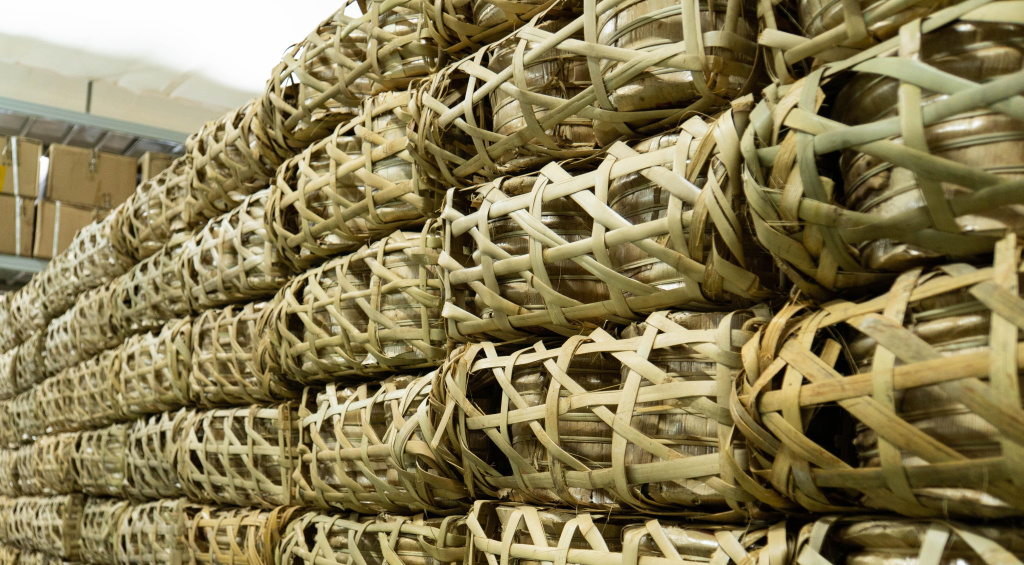Is it true that loose puer tea should be drunk as soon as possible? Let's look into the nuances of storage
Most of the puer is presented in the form of pressed teas: cakes, bricks, toch, etc. Every year in the spring, when the new harvest appears, many sellers, in order to give tea lovers the opportunity to try the new product as soon as possible, offer high-quality loose teas.
Although loose tea (that is, raw large-leaf tea from Yunnan) is not strictly speaking pu-erh, tea lovers, having tried a loose tea they like, often want to keep some in reserve.
What is the optimal shelf life for loose pu-erh tea?
The optimal shelf life of loose puer is a question that is difficult to answer unequivocally. This is due to many factors that influence the aging process of tea:
- Puerh variety: Each variety has its own characteristics and aging potential. Some varieties are better revealed with long-term storage, while others can lose their qualities after just a few years.
- Storage conditions: Temperature, humidity, presence of light and foreign odors – all this has a significant impact on the aging process of tea. Optimal storage conditions are a dark, dry and cool place.
- Purpose of storage: If you want to track the transformation of the tea's taste over time, you can store it for quite a long time. If freshness and brightness of taste are important to you, it is better to drink it within the first year after purchase.
If you want to track the transformation of the tea's taste over time, you can store it for quite a long time. However, if freshness and brightness of taste are important to you, it is better to drink it within the first year after purchase.
Pressed teas can be stored for years, but is loose tea suitable for long-term storage?
Without going into details of raw materials and technology, puerh requires clean, dark, dry and odorless, hermetically sealed conditions. At the same time, the more tea is stored in one place, the better for subsequent transformation.
Pressing raw tea into cakes, bricks, tochi and storing them in relatively airtight conditions is aimed at reducing the tea's contact with air and preserving more of its beneficial substances.
If you store loose tea, there are large gaps between the tea leaves. Even in airtight bags or jars, it is impossible to completely prevent the tea from coming into contact with air, which over time leads to a faster oxidation process, but a slower fermentation process.
If you have a lot of loose tea, for example, several dozen kilograms, and you store it in a cardboard box, then nothing bad will happen to it within 1-2 years, perhaps even pleasant changes will appear. But if the amount of tea is small, then significant changes will not occur as a result of storage.
Why is it difficult to determine exact dates?
- Personal preferences: Taste is a subjective concept. What one person considers the ideal taste of old puer, another may not like.
- Unpredictability of the aging process: The aging process of tea is a complex biochemical process that depends on many factors and is not always predictable.
General recommendations:
- For short-term storage: If you plan to drink the tea within the next year, it is enough to store it in an airtight container in a dark and cool place.
- For long-term storage: If you want to observe the transformation of the tea's taste, it is better to choose a special container for storing tea, which will provide optimal conditions.
- Regular Tasting: Taste your tea periodically to monitor any changes in its flavor.
Loose puer is essentially raw tea that has not yet been pressed. It is more susceptible to external influences such as light, humidity, and air. When stored properly, loose puer can retain its quality for several years. However, the longer it is stored, the more likely it is that its flavor and aroma will change.
Additional factors affecting shelf life:
- Packaging: The material and quality of the packaging play an important role. It is best to choose natural materials such as paper or bamboo.
- Air humidity: Too much humidity can cause mold to form, while too little can cause the tea to dry out.
- Temperature: The optimal temperature for storing pu-erh is about 18-22 degrees Celsius.
The optimal shelf life of loose puer is a question that every tea connoisseur must answer for themselves. Experiment, try different varieties and storage conditions, and you will definitely find your ideal tea.
Loose puer does not have to be drunk immediately after purchase. Under proper storage conditions, it can delight you with its taste for several years. However, if you prefer freshness and brightness of taste, it is better to drink it within the first year after purchase. Pressed puer is more suitable for long-term storage, since the oxidation and fermentation processes are more harmonious.
- Комментарии
- Вконтакте






